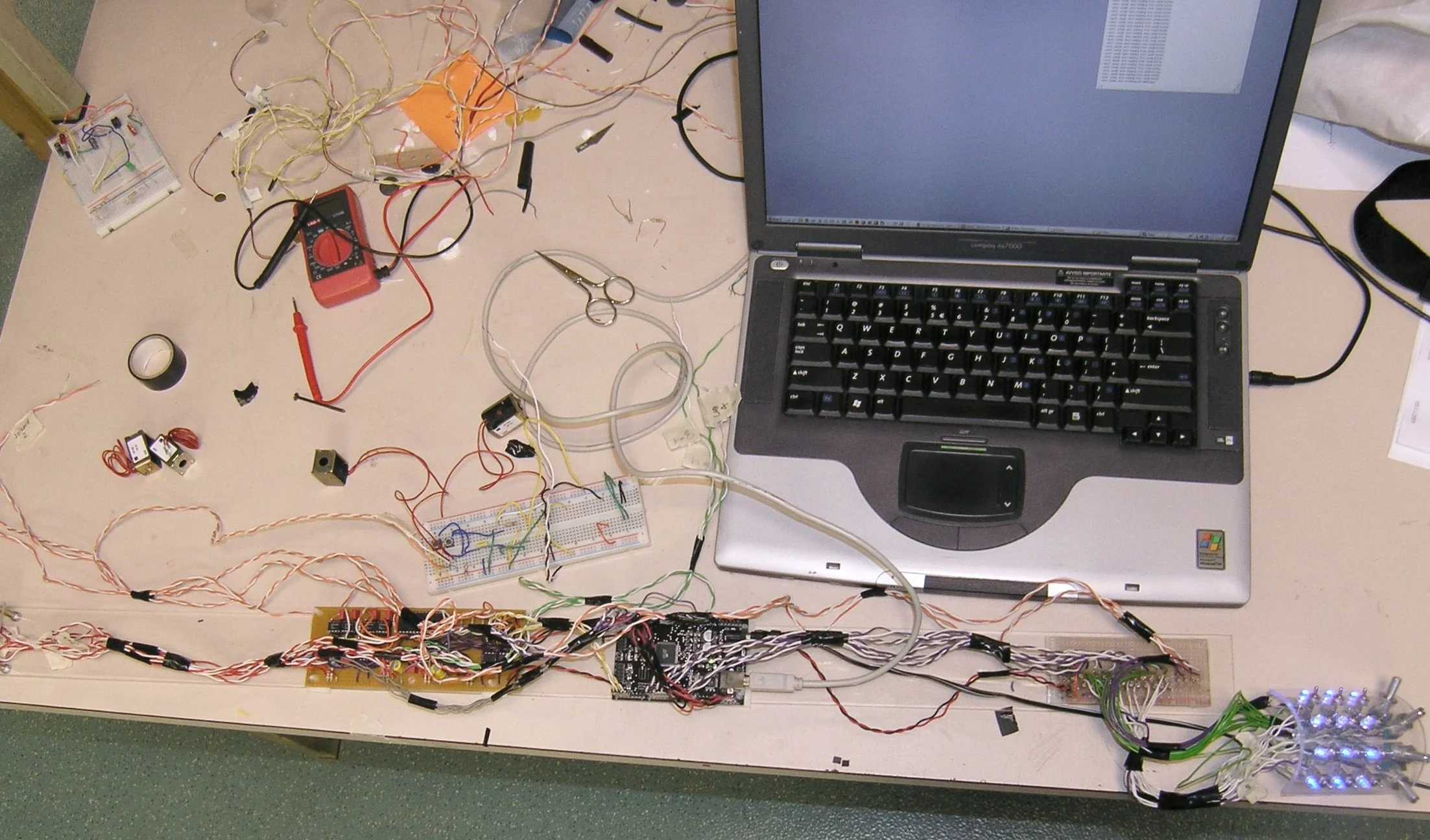String Thing
Masters Thesis, Interaction Design Institute Ivrea
WORK > STRING THING
Context
For my Master's thesis, I took advantage of the opportunity to explore ideas around applying interaction design thinking to "expressive complexity" within the realm of controlling music generation software - something I find fun and interesting to think about.
Part of the original aim was to try and bring some of the organic chaos of playing traditional instruments, it was intentionally complex and hard to use - as a result the musical experiments here do tend to sound like someone trying to play an instrument for the first time!
Thesis overview
The sight of a musician playing a traditional instrument, perhaps particularly a stringed one, is a satisfying and intelligible visual counterpart of the sound.
Computer-generated and computer-enhanced sounds have enriched musical language and expression. But computer-based music performances still mostly involve people sitting rigidly behind a laptop, their fingers hidden by the screen..
String Thing is a cello-like electronic instrument played by stroking or beating metal rods with the hands. The use of bodily gestures, infinitely variable and visible to the audience, avoids the ‘robotic’ and visually uncommunicative quality typical of computer music.
Four roughly parallel metal rods are each divided into a long and a short section by a bridge element. The pressure and position of the fingers on the longer rod section are continuously sensed to control pitch and expression; pressure on the shorter sections controls velocity, attack and volume. MIDI software converts this information into sound and, through magnets under each rod, vibrates the rod according to the pressure it senses, thus returning haptic feedback to the player.
Like a fretless instrument, String Thing produces continuous pitch: notes bend seamlessly into each other. Light from a laser pointer above each rod, reflected as a dot on the player’s finger, is detected by a small webcam in the bridge; this movement controls the pitch.
Process
Through a series of iterative and experimental prototypes, I assembled the best bits into a one designed piece in order to present the concept of something that provides a sense of continuous pitch, as well as a sense of tactile and auditory feedback and response to a wide range of physical pressure.









